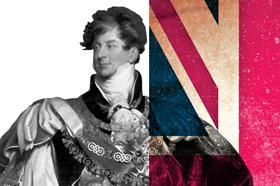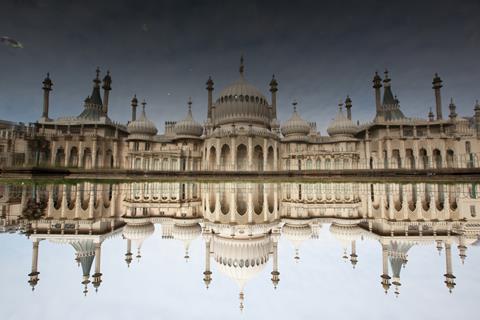How much influence have the Royals had on British architecture? Building investigates
All week Building has been examining the influence of our monarchs on British architecture ahead of the Jubilee. On Tuesday we looked at how William the Conqueror used architecture strategically as a method of defence and yesterday we explored the pioneering ideas of King James I.
Today we move on to 1820 and the reign of King George IV before tomorrow’s full feature in print and online that will reveal the influence of the Queen today - and her eldest son.
King George IV

Reign: 1820-1830
Legacy: Buckingham Palace, Trafalgar Square, Marble Arch, London’s West End, Regent’s Park, Brighton Pavilion, Regent’s Canal, London Zoo, King’s College, National Gallery
George IV was decadent, dissolute and debauched and led the kind of hedonistic, extravagant lifestyle that makes today’s oligarchs and celebrities look like choirboys. During his long stint as Prince of Wales and later Prince Regent he was the ultimate caricature of the playboy party prince and his enormous appetite for profligacy, gluttony and licentiousness enraged parliament, delighted satirists and allegedly earned him a monumentally regal 56-inch waist.
But despite the king’s best efforts, there was more to him than wine, women and gambling. He was not only a prolific patron of architecture and the arts but a paragon of fashion, style and taste. Moreover, in the Regency, he leant his title to one of the most enduring cultural movements of the 18th and 19th centuries and helped found both the National Gallery and King’s College. Even the famously irascible Duke of Wellington - far more at home on a battlefield than in a ballroom - dubbed him the “First Gentleman of Europe”.
Critical to the king’s architectural influence was his friendship with and patronage of the great Regency architect John Nash, arguably the most successful public private partnership in British construction history. Together they created Buckingham Palace, London’s Regent’s Park and its spectacular terraces, Regent Street and Brighton Pavilion and laid the foundations for an unbuilt summer palace that eventually became London Zoo.
By developing crown and commercial lands in central London the duo forged much of the urban character of the West End today and transformed London from a renaissance capital into an imperial metropolis. Paris is often considered the epitome of the formally planned classical city. But the sweeping urbanism of Haussmann’s Grand Boulevards was directly inspired by the parks, streets and terraces of Regency London produced 50 years earlier.
When the king died The Times, with barely concealed euphoria that today’s Murdoch-press would never dare emulate, declared: “There never was an individual less regretted by his fellow-creatures.” What they couldn’t possibly know at the time was that, despite his deep personal flaws, George IV had arguably had the biggest direct impact on English and European architecture and urbanism of any British monarch before him or since.




























No comments yet